Inside a Superchic Parisian Aerie Designed by Isabelle Stanislas
The Paris-based interior designer Isabelle Stanislas still clearly recalls being interviewed by the owner of this majestic apartment close to the Place du Trocadéro. The meeting took place in his office, located just a stone’s throw away. “After we’d been talking for a while, I looked down and suddenly noticed the rug was a prototype I’d designed,” she recounts. “He was not aware it was by me, and I had no idea who had bought it.”
Serendipity aside, for her client—a dynamic entrepreneur who set up his company in his early 20s—the acquisition of the 4,800-square-foot flat represents the fulfilment of a long-held dream. At the age of 13, he jumped onto the Paris Métro and alighted on a whim at the Trocadéro station. “I didn’t know where I was, and when I came up to street level, I found myself face-to-face with the Eiffel Tower, directly across the Seine,” he says. “I immediately fell in love with the square and vowed, ‘When I grow up and am successful, this is where I’ll live.’ ”
He considers the building to be one of the most beautiful in the French capital, and the flat itself certainly boasts some quite sumptuous volumes. Take, for example, the entrance hall, a grand circular space around which the main reception rooms are arranged in a starlike configuration, along with the owner’s study, a family room that leads to the bedroom corridor, and a kitchen decorated with stylish swathes of black Aracruz marble and oak cabinetry. The former kitchen, notes Stanislas, was rather less practical: “It was so far away at the back of the flat, you almost needed roller skates to transport dishes to the dining room.”
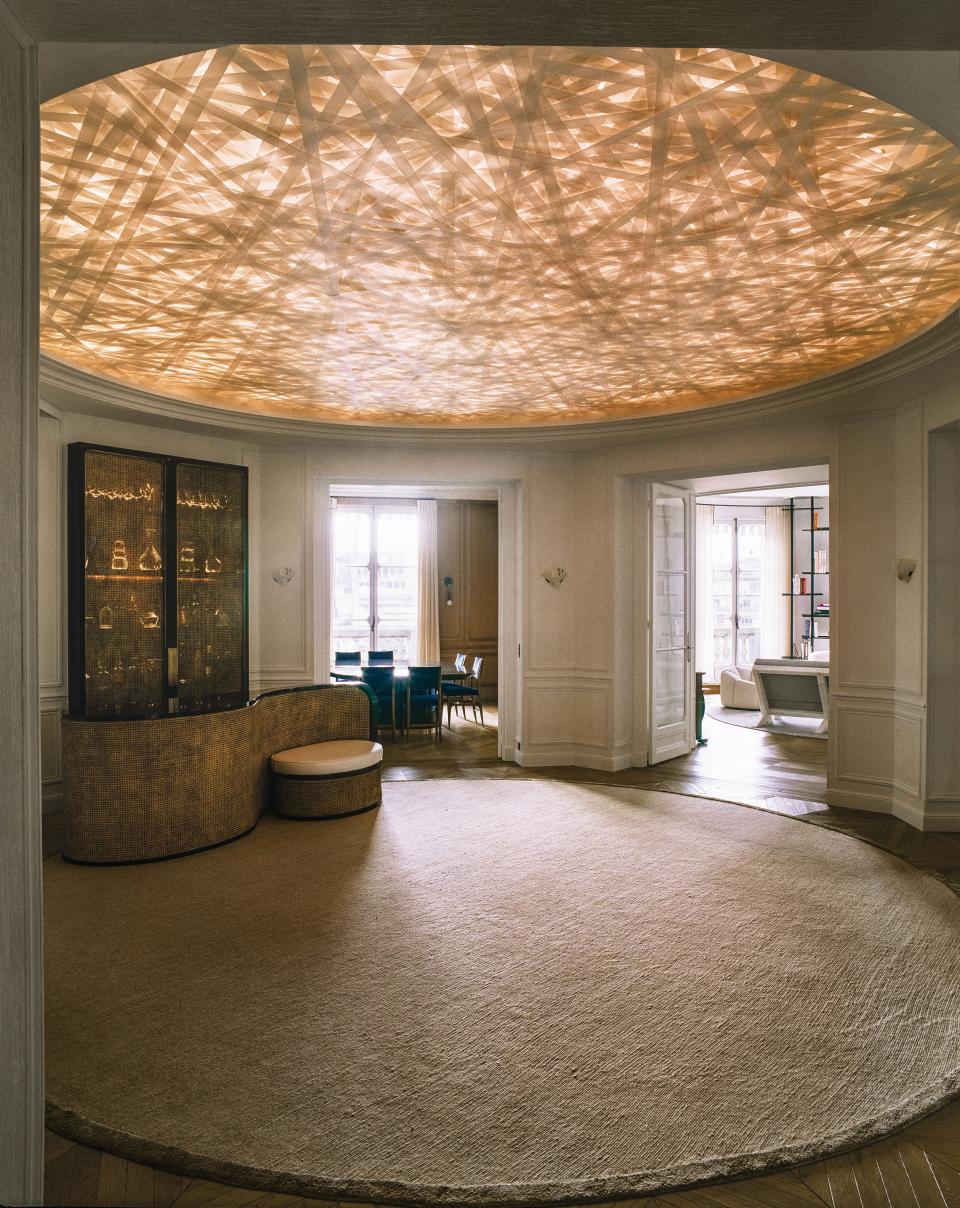
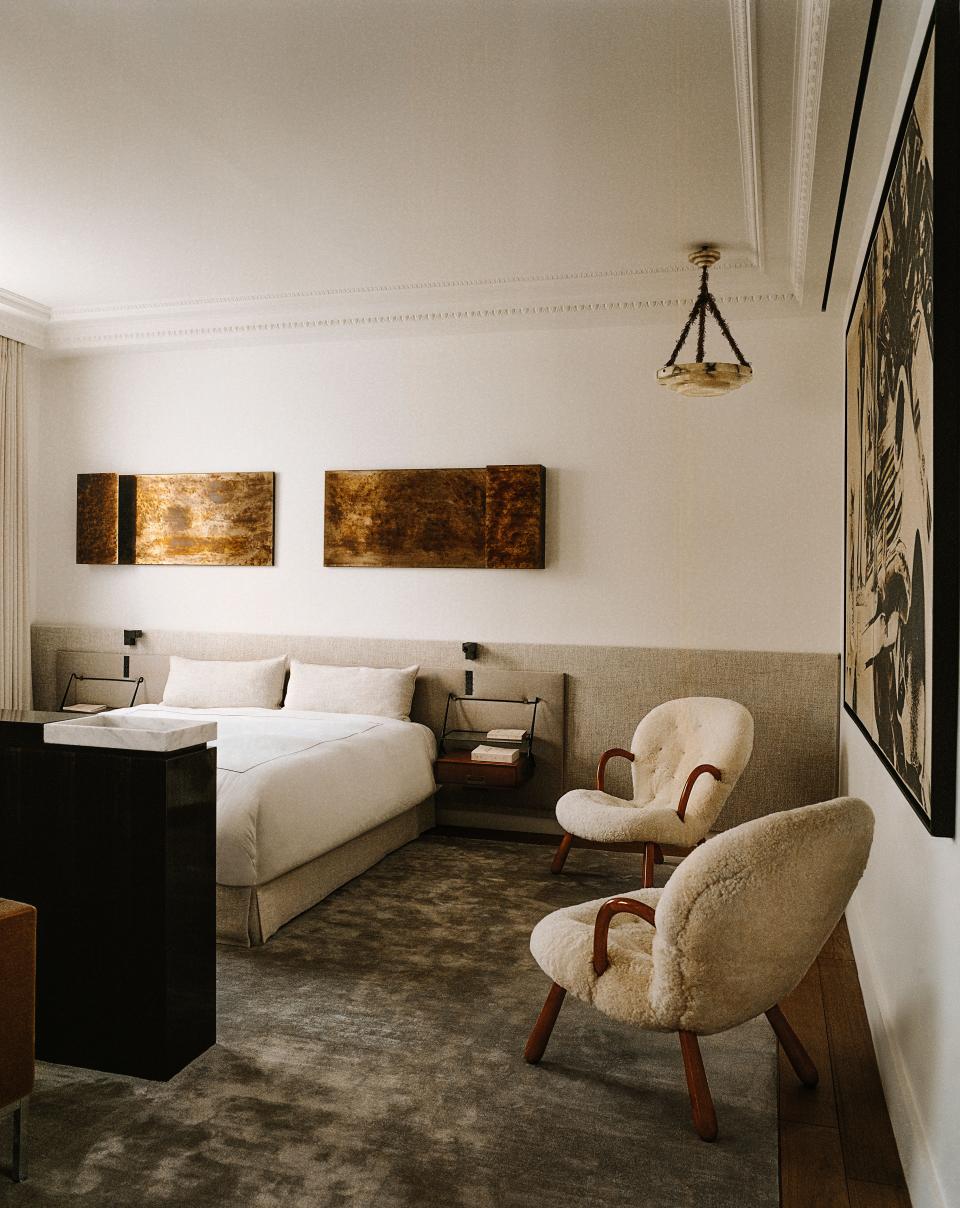
To add an extra dose of drama, Stanislas decided to extend the apartment upward. Verticality is a constant in a number of her projects. (In her own former apartment, she installed a striking mezzanine at one end of the living room; today she lives in a duplex across from the Palais-Royal.) Here she noticed the living room was located under the dome of one of those pepper pot–like towers often found at the corner of Parisian buildings and decided to do some investigating. Once she’d gutted the room above it, she discovered the dazzling century-old wooden roof structure that radiates out in a spokelike fashion. “It brings such a magical touch to the apartment,” she enthuses. In order to celebrate it, she pierced a hole in the middle of the sitting room’s ceiling and created a sweeping staircase with an elaborate wrought-iron handrail that leads
to a circular viewing platform up above.
Such bravura gestures are offset elsewhere by a myriad of exquisite architectural details—a response to the client’s request for “finesse” and “authenticity.” Stanislas installed wood paneling in the dining room and study, a coffered ceiling in the family room, and replaced each and every fireplace (the apartment had previously been a squat for four years and was in a rather sorry state). Other elements of the decor are typical of her sophisticated work, which is the subject of a monograph to be published by Rizzoli later this year. She loves working with a largely monochromatic palette and claims to treat each room like an island. “If you look, all the furniture is placed in the center,” she asserts.
More Inside a Superchic Parisian Aerie Designed by Isabelle Stanislas
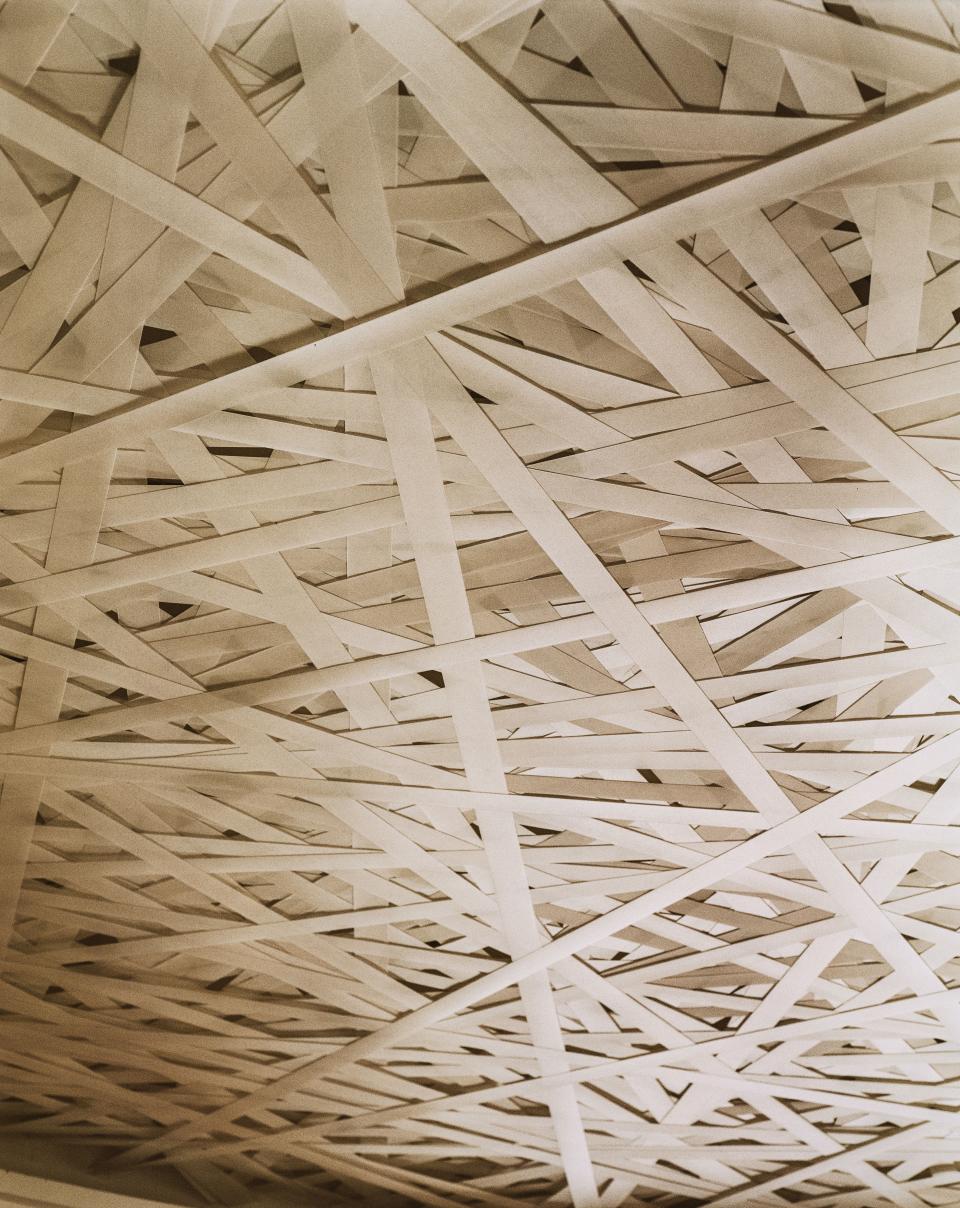
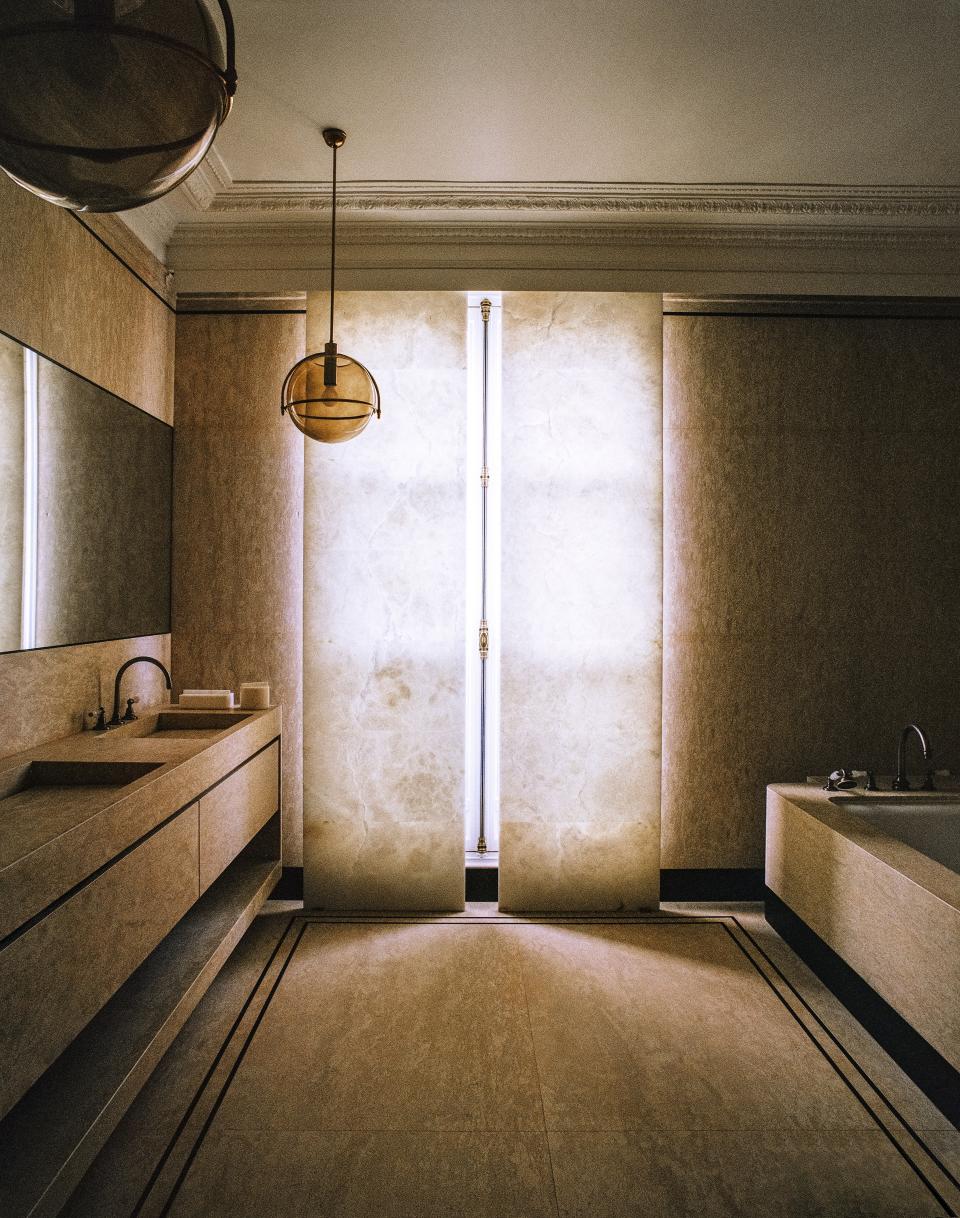
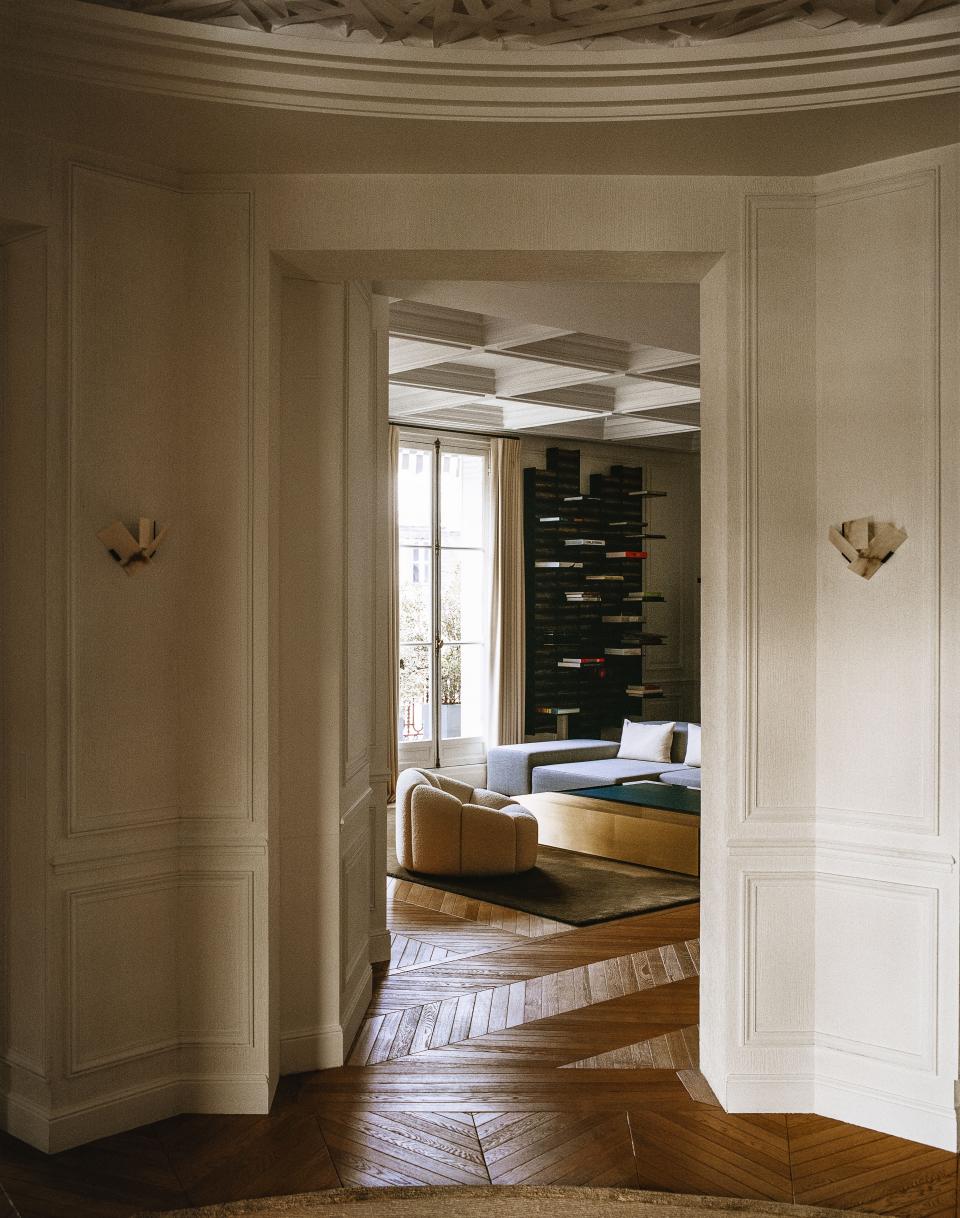
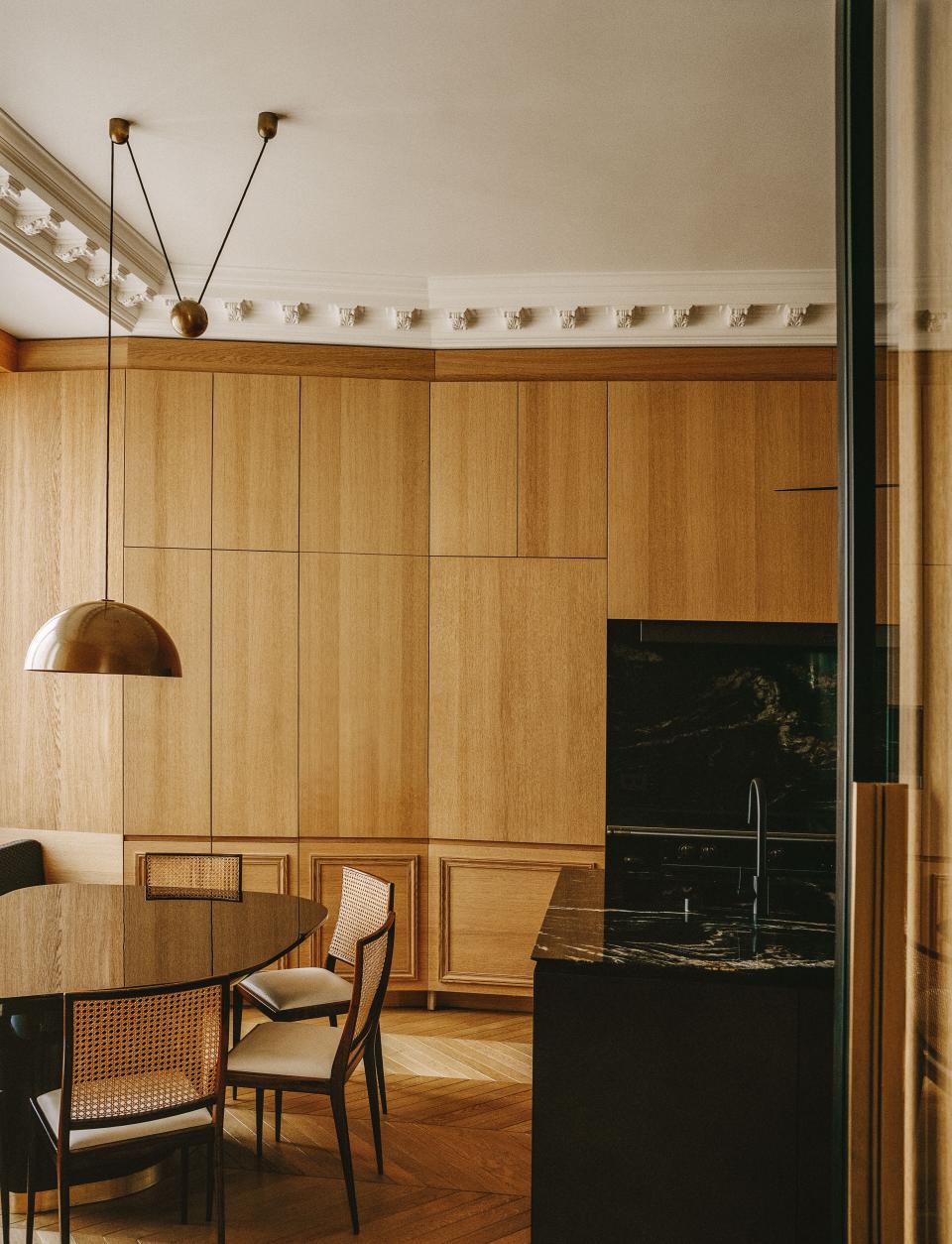
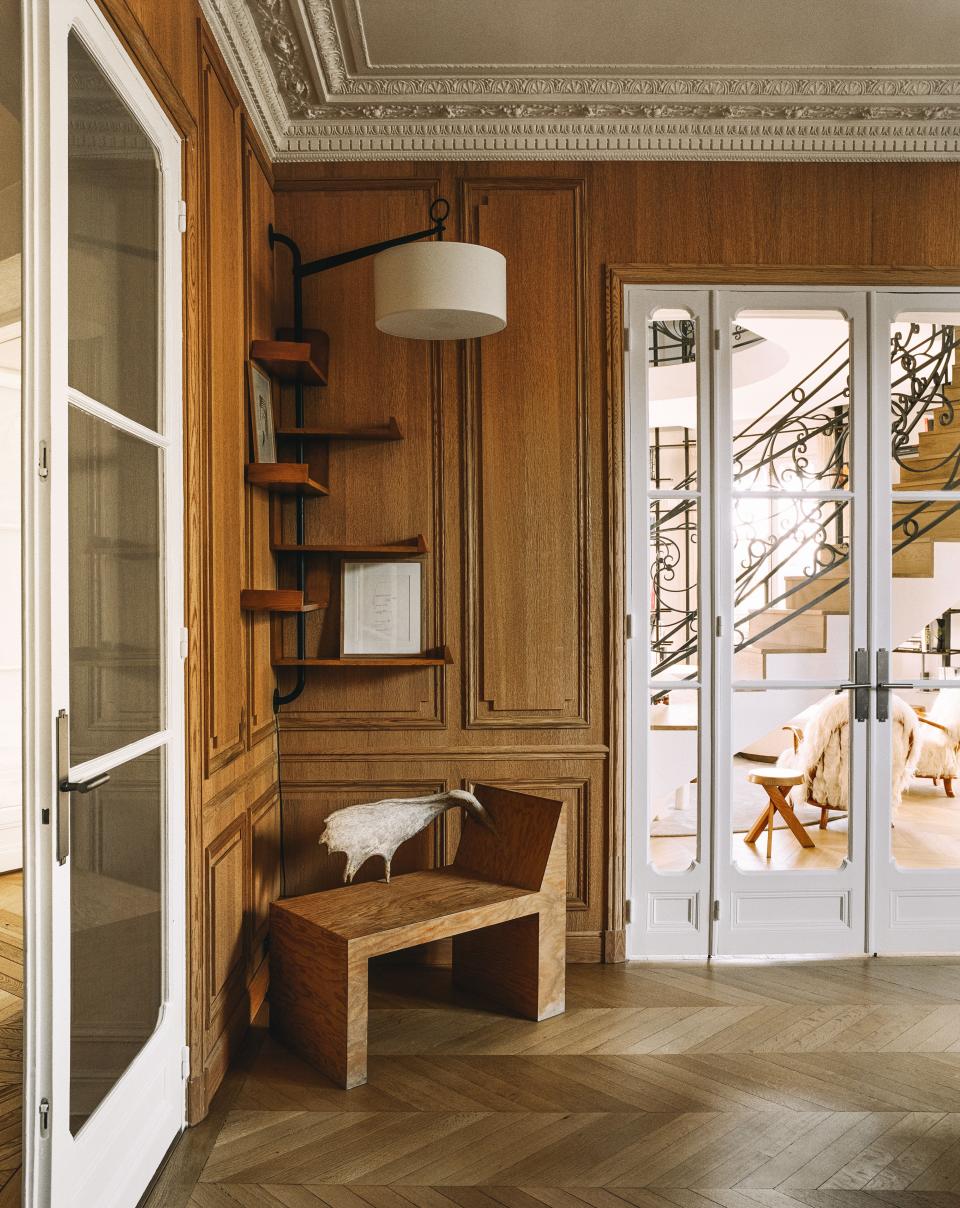


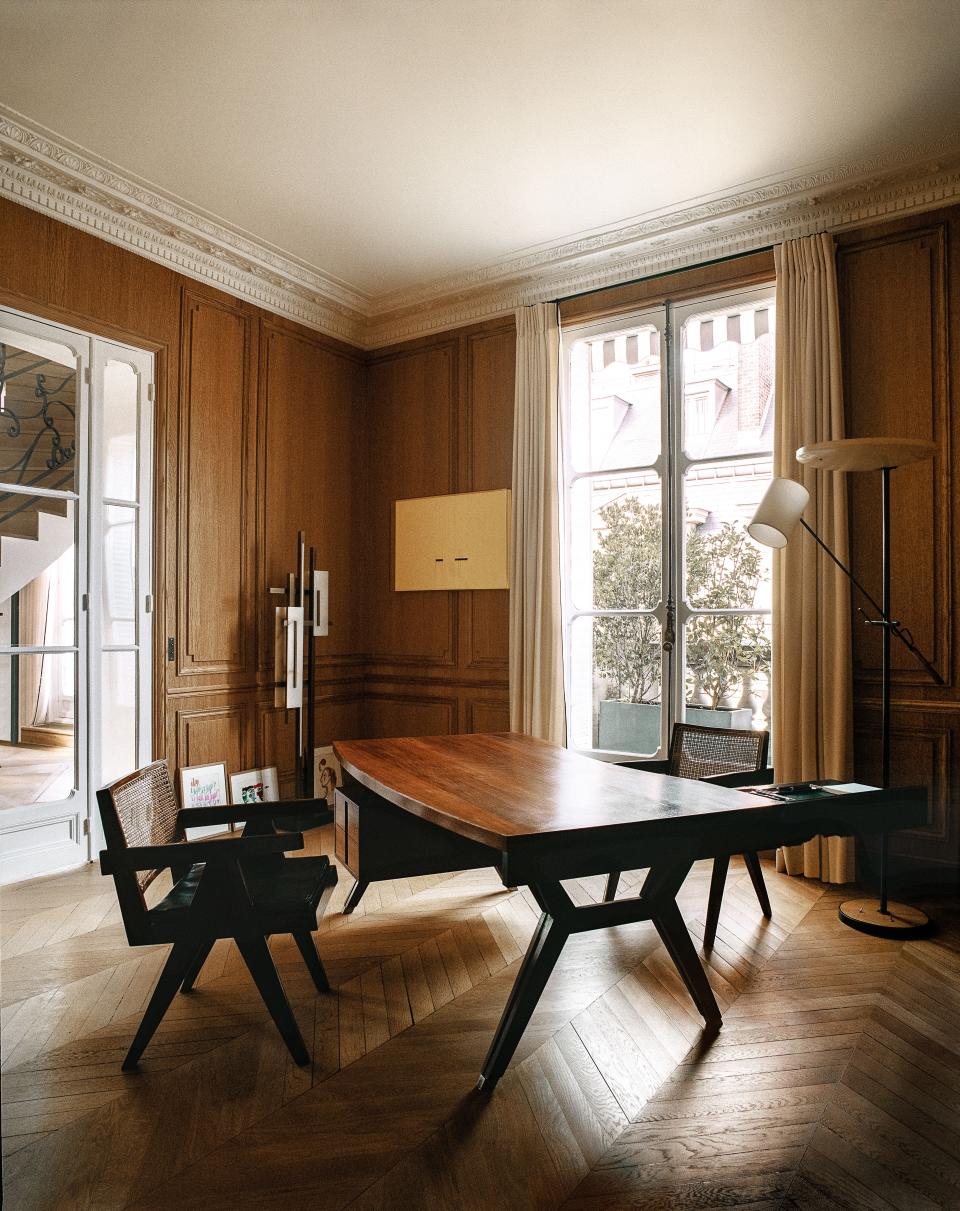
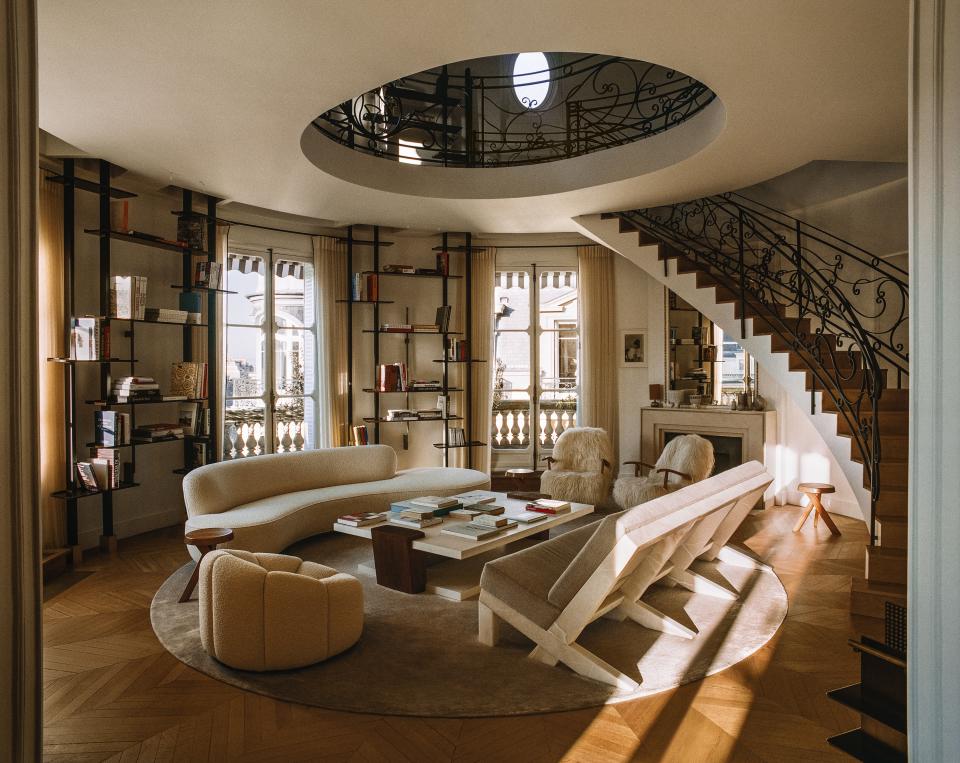
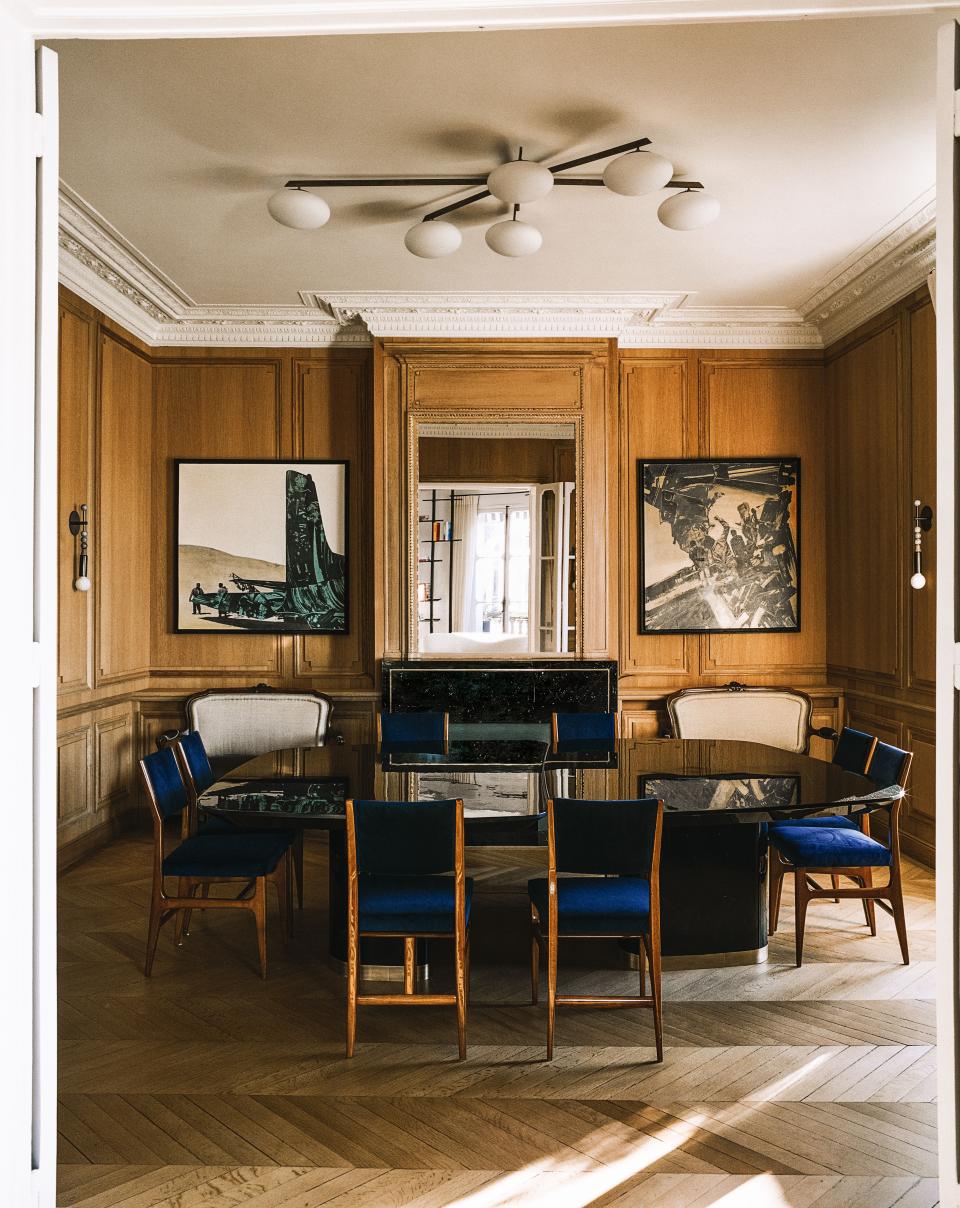
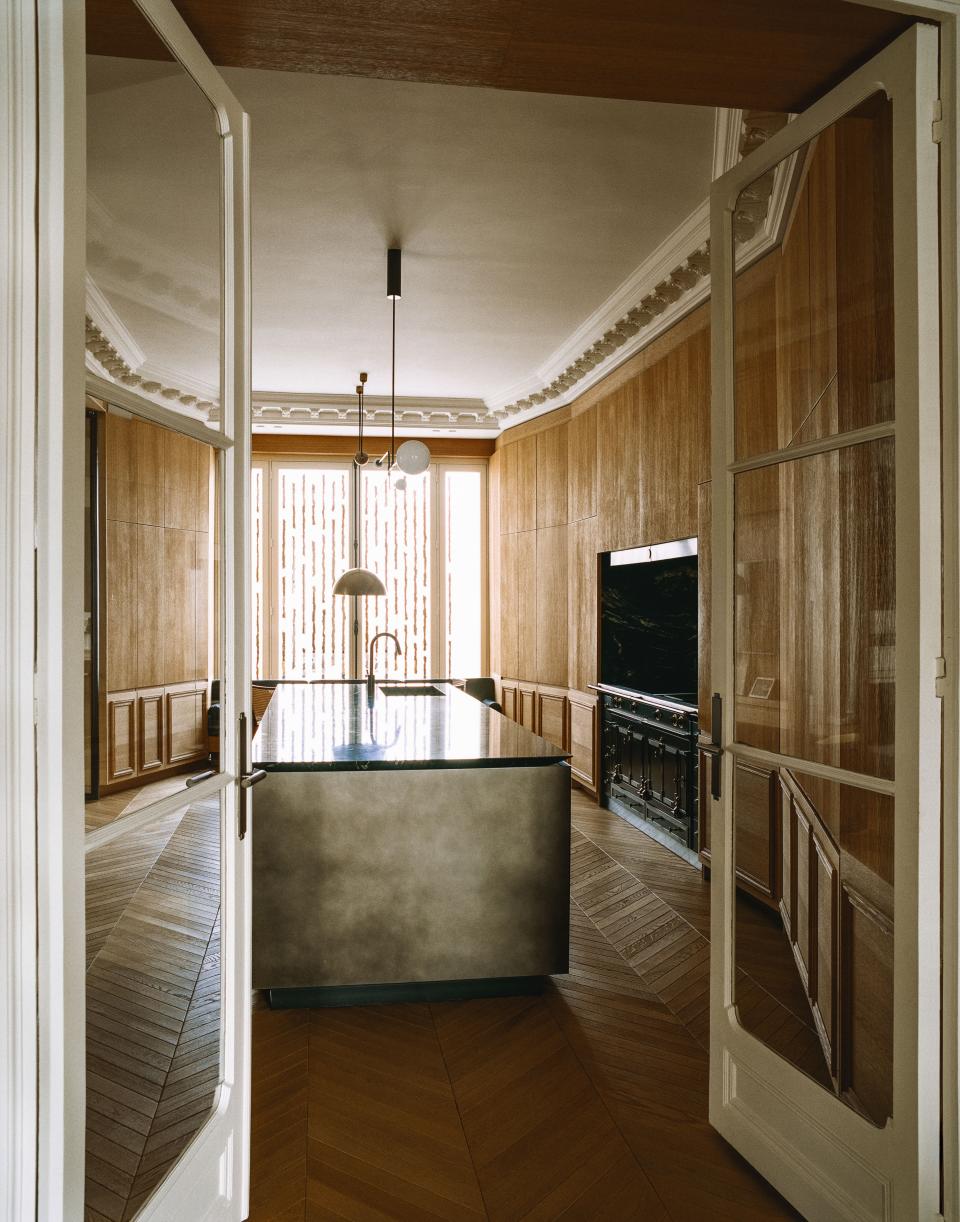
Her interiors also often incorporate a number of her own creations. Here they include a trio of custom lacquered tables—two that stand side by side in the dining room and a third in the kitchen. They were conceived so they could be grouped together in the entry hall for large meals of up to 24. For most people, that would be more than sufficient. Stanislas’s client, however, admits to being a tad frustrated. “I love bringing diverse people together and would have been happy to have space for 30 or 40,” he explains.
His favorite part of the two-year renovation process was hunting for the furniture. He fell in love not only with European design of the ’50s but also with contemporary pieces by the likes of Dimorestudio and Rick Owens. “It was a voyage of self-discovery,” he says, “and I came to understand what had previously seemed absurd—why someone would spend so much on a chair. When you get up close to objects and meet their creators, you understand there’s a story behind each object.” That said, some of his most cherished finds are not the most expensive ones. He chanced upon a pair of 19th-century sofas and a vintage alabaster pendant while visiting the Nilufar gallery in Milan. “They were in a vestibule, more or less put to one side,” he recalls.
The pendant jauntily found its place off-center in one corner of his bedroom. “It’s more fun like that,” says Stanislas. “I like things where you ask yourself, ‘Why’s that there?’ It’s those touches that really make an interior sing.”
Originally Appeared on Architectural Digest

